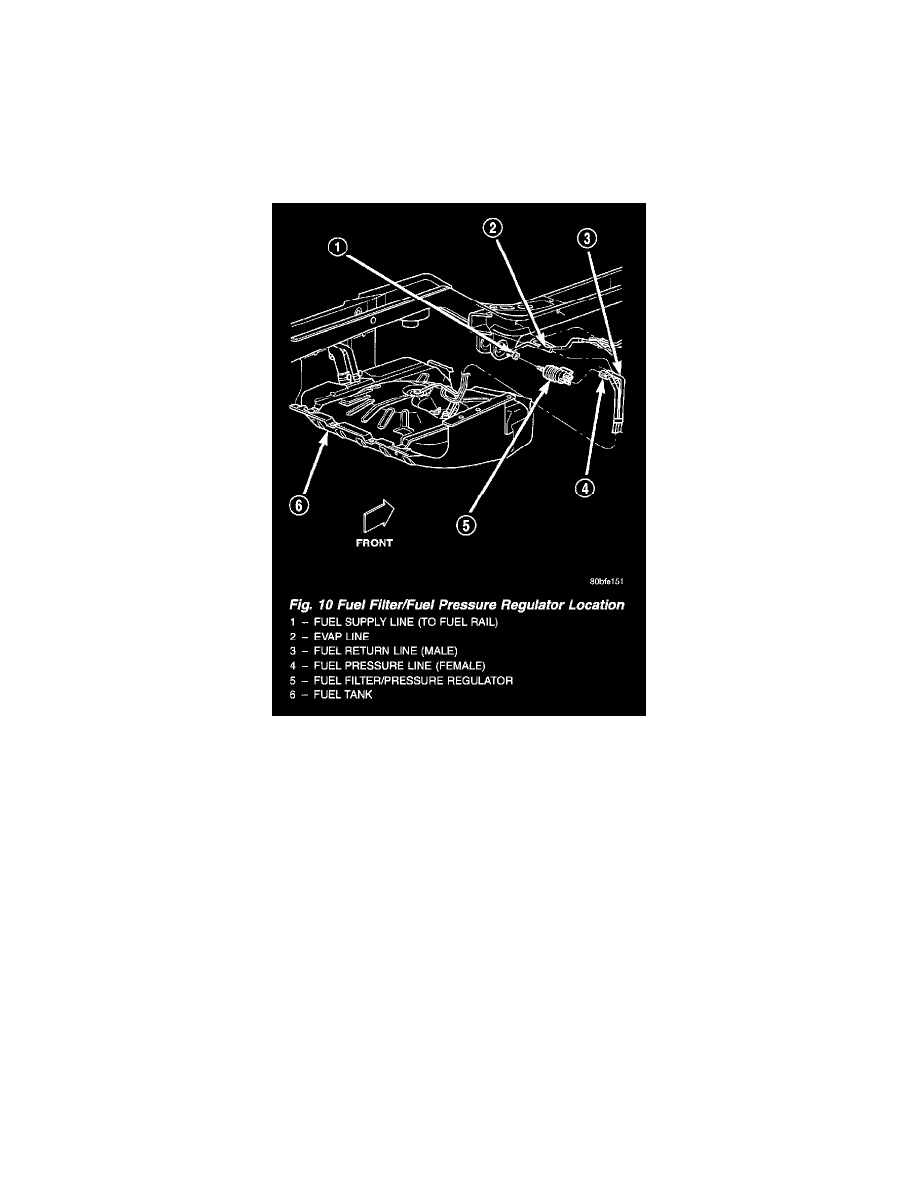Grand Cherokee 2WD V8-4.7L VIN N (2000)

1. Remove pressure test port cap at fuel rail test port (Fig. 7) or (Fig. 8). Connect 0 - 414 kPa (0 - 60 psi) fuel pressure gauge (from gauge set 5069)
to test port pressure fitting on fuel rail (Fig. 9). The DRB III Scan Tool along with the PEP module, the 500 psi pressure transducer, and the
transducer-to-test port adapter may also be used in place of the fuel pressure gauge.
2. Start and warm engine and note pressure gauge reading. The DRB scan tool may also be used to power fuel pump.
-
Fuel pressure should be 339 kPa ± 34 kPa (49.2 psi ± 5 psi) at idle.
3. If engine runs, but pressure is below 44.2 psi, determine if fuel pump or filter/regulator is defective. Proceed to next step:
a. Check for a kinked fuel supply line somewhere between fuel rail and fuel pump module.
Fig. 10 Fuel Filter/Fuel Pressure Regulator Location
b. If line is not kinked and pressure is low, raise vehicle and disconnect fuel pressure line at fuel filter/fuel pressure regulator (Fig. 10). Three fuel
lines are attached to filter/regulator. The fuel pressure line is attached to the right side of filter/regulator. It is also the most rearward of the two
(Fig. 10).
c. Install Special 5/16" Fuel Line Adapter Tool # 6539 between disconnected fuel line and filter/regulator fitting
d. Attach 0 - 60 psi fuel pressure test gauge to "T" fitting on tool 6539.
e. Use DRB scan tool to power fuel pump. If pressure is now within specifications, replace fuel filter/fuel pressure regulator.
f.
If pressure is still low, replace fuel pump module.
4. If operating pressure is above 54.2 psi, electric fuel pump is OK, but fuel pressure regulator is defective. Replace fuel filter/fuel pressure regulator.
5. Install test port cap to fuel rail test port.
